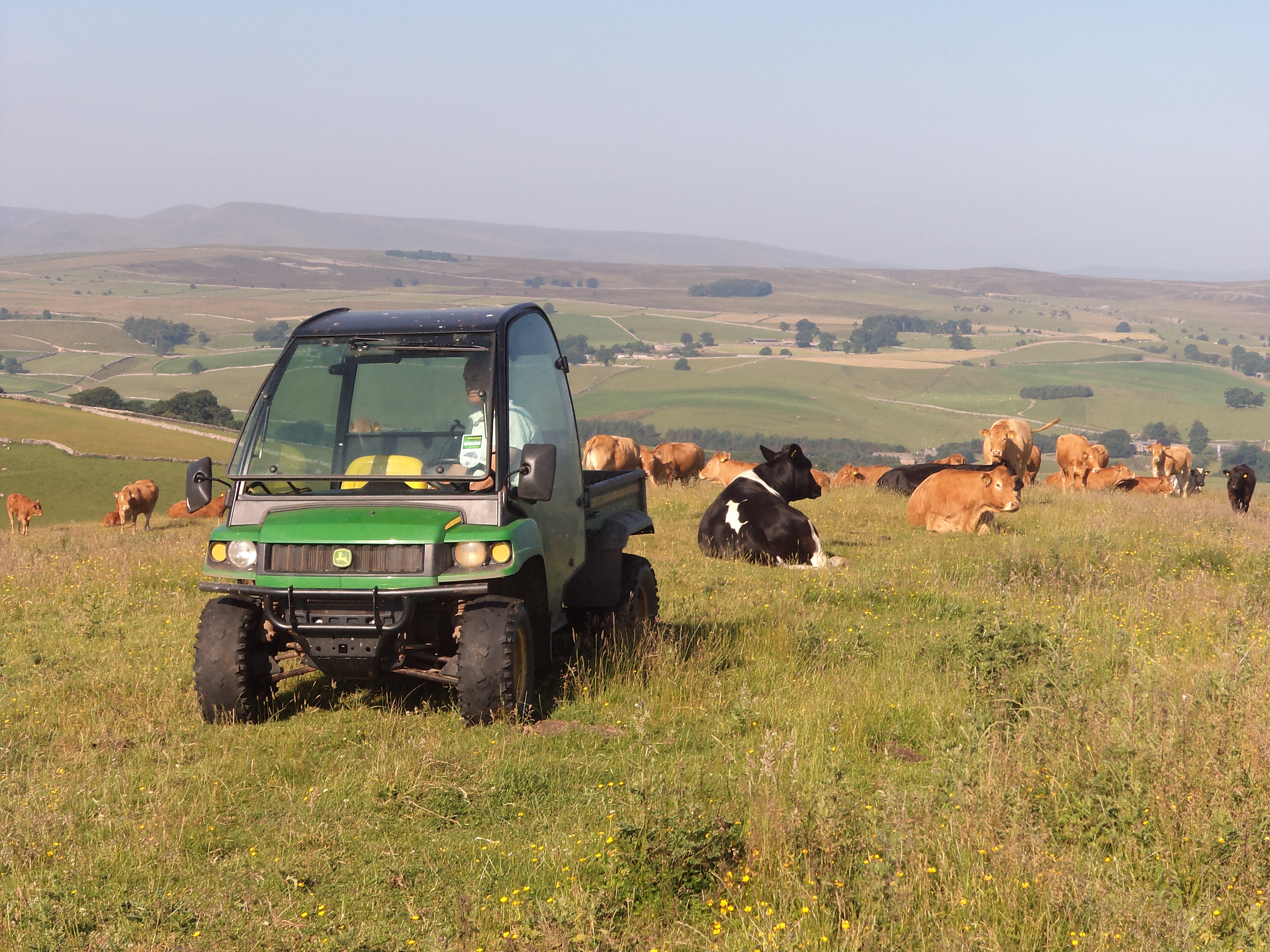



Sustainable Beef: What Can Be Done In the Uplands?
UK – Northern England is home to vast expanses of low output upland pasture, where cattle have recently become viewed as a wildlife management tool, rather than a beef animal.Back when subsidies were linked to production, there was a reason to have high proportions of grazing animals on National Park hills.
However, after the decoupling of payments, environmental stewardship became the focus for hill farmers and today farmers are paid to use cattle, alongside sheep, to create a varied grassland sward structure.
This is managed by government bodies who limit the stocking densities and grazing periods to optimise weed control and promote biodiversity.
In some cases, slow growing native breeds are preferred over fast growing continentals.
Foregone profit is subsidised by government payments.
This is justifiable because the resultant landscape is of international significance and creates a varied grassland habitat suitable for invertebrates, rare broad leaved herbs and ground nesting birds.
John Hall farms a sheep and beef enterprise under such a payment system with his son Ben at the head of Swaledale, in the Pennine hills of northern England.
The Hall suckler herd of 12 cows plays a valuable role in the management of a designated pasture area, home to rare plants and hawthorn woodland.
*
"The starting point depends on what the biodiversity objectives are; these vary from location to location"
Natural England, the policy implementation organisation for Defra, has agreed to pay John and neighbouring farmers to replace sheep with cattle on a 250 acre pasture for ten years.
In all, forty cows, plus followers, graze the area. This means a stocking rate of 0.76 livestock units per hectare, which the farmers consider to constitute undergrazing.
Pippa Merricks, a farm adviser for Natural England explains that stocking rates are not an exact science and are tailored to suit individual sites.
“We have a range of tools to assess the stocking rates but none of them will give the whole answer,” says Pippa. “The starting point depends on what the biodiversity objectives are; these vary from location to location.”
When farming for the environment, Pippa explains that the land is not necessarily managed for agricultural goals.
“Natural England is evaluating its own practice in an evidence review. There are some cases where we haven’t got things quite right.”
The review suggests that, in select instances, too few cattle have been stocked on the uplands, resulting in undergrazing and wasted grass.
Like any famer, John does not like to see grass go to waste. But, farmers acknowledge that without environmental schemes, justifying cattle would be hard on some farms.
A motorised all-terrain vehicle (pictured) is needed to travel rough ground to monitor cattle during bulling.
As a result, careful management options need to be considered to make systems sustainable and lower input costs.
“One thing that has made the beef side easier to manage is compact calving,” says John. “This allows us to sell all our store cattle in one lot and calve cows around March time before we get busy with lambing from April onwards.”
Labour is also saved as all cows can be monitored at the same time when checked late at night, adds John.
The farm uses British Blue and Limousin genetics from neighbouring stud bulls from the dale. Bulling management is hard because of the distance between the farm and pasture.
“The bull goes in to the pasture with the cows about the 20th May and we just leave them to it. We visit them regularly to monitor, especially after three weeks to see if any haven't held the bull.
“Most of our neighbours cows have been bulled before they go out so he's just there to catch ours and any of theirs that have been missed,” says John.
Around November time, when the scheme dictates the cows are brought off the land, cows are housed in a shed on the farm and fed molasses on silage.
They are kept in cubicles, although John says this wasn’t always the case.
“Cows were housed loose in the shed but this system was using too much straw. This is why we chose to install cubicles," says John.
"Each cubicle cost £120 each to fit and we are making the money back on straw bills – which have halved.”
This saved on straw haulage bills and labour time in mucking out while improving the health of the housed animals as the resulting bedding environment is cleaner.
Through environmental subsidies and herd management plans, uplands beef farming can be made to work on economic and environmental levels.
But, whether or not the grassland improves or the hawthorn woodlands flourish will remain to be seen. Mrs Merricks says that the effects of agri-environment schemes are sometimes hard to measure.
“It is often hard to know when success is achieved as there is no accurate way of telling what a lot of farmland would look like without upland stewardship schemes,” says Pippa.
What Mrs Merricks is sure of is that by de-intensifying agriculture, habitat and biodiversity can be maintained and restored.
Michael Priestley
News Team - Editor
Mainly production and market stories on ruminants sector. Works closely with sustainability consultants at FAI Farms




